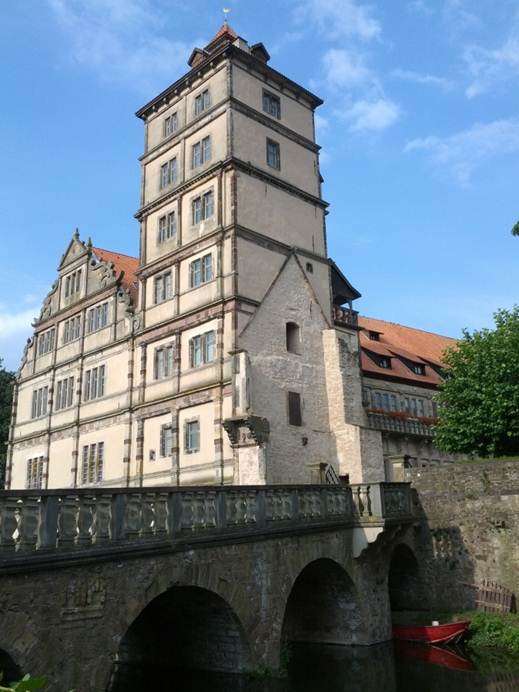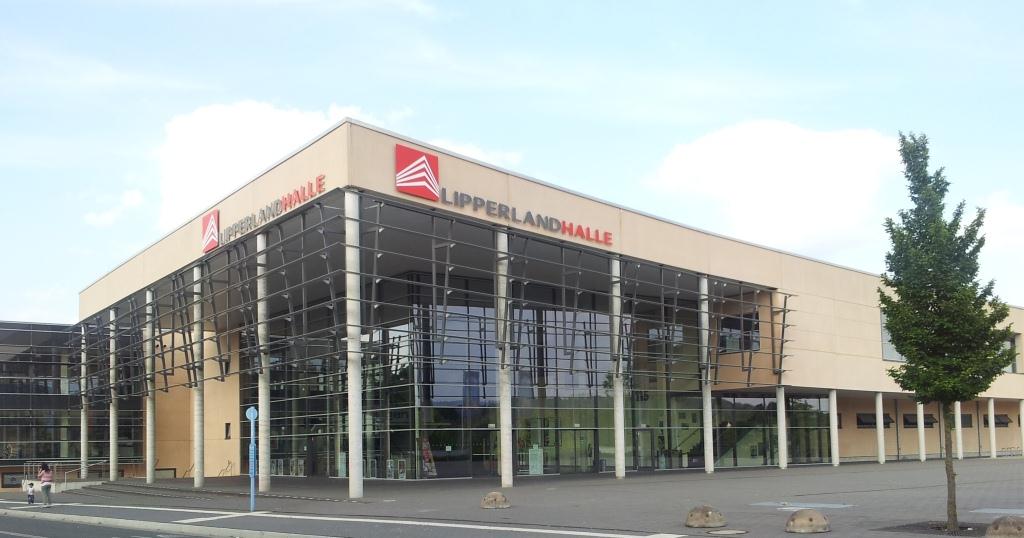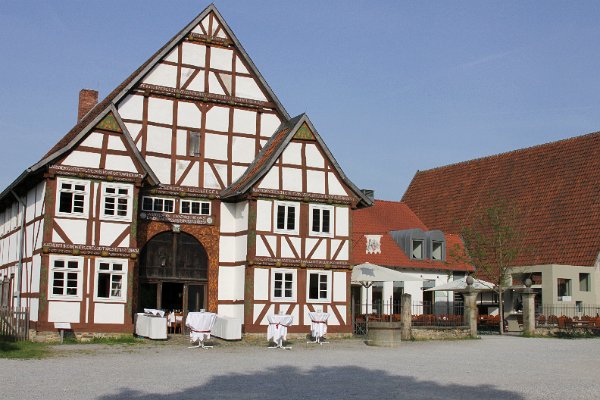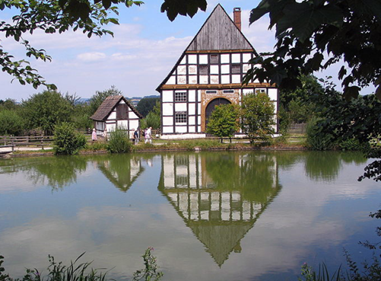Tuesday, Sept. 24th 2013:
Welcome Receiption at the Castle "Lemgo-Brake"
The Welcome Receiption will be held at the Castle Lemgo-Brake. During the middleage the Castle was rebuilt as the residence of the Counts zur Lippe in the Renaissance style from 1587 on. It is surrounded by a moat and is erected on the foundation walls of one of the largest medieval castles in northern Germany. Its striking tower, visible from a distance, makes it the landmark of the old Hanse town of Lemgo. In 1986 the Weser-Renaissance museum was established in one section of the building, which will be also a part of the Welcome Receiption. It gives an overall impression of the cultural history of the 16th and the early 17th century. Selected objects in the fields of architecture, painting, graphic arts, furniture, festivals, banquet silverware, cuisine, religion, science and economics are supplemented by reconstructions and installations relating to the beginnings of the natural sciences � such as an alchemist�s laboratory or an arts and curiosity cabinet.
The Castle is located in the heart of Brake a district of Lemgo which is about 1 mile away from the conference venue. Our visit will start with a 30 minute long guided museum tour. After that we will be welcomed in Lemgo by a short speech and have some drinks and fingerfood.


Wednesday, Sept. 25th 2013:
ISPCS Platinum Partner Event at Lipperlandhalle Lemgo
The ISPCS Platinum Partner Event is sponsored by Meinberg. It will be celebratetd in the Lipperlandhalle in Lemgo. The start time is 6 pm with free drinks, food and a big surprise!

Thursday, Sept. 26th 2013:
Conference Dinner at LWL-Open-Air-Museum Detmold
The Conference Dinner will be held on Sept. 26th (Wednesday) at the famous restaurant "Im Weissen Ross" which is located in the center of the LWL-Open-Air-Museum (Landscape union Westphalia-Lippe).
The LWL-Open-Air-Museum is the largest open-air museum of geramy with more than 90 hectares and currently 116 buildings from all social classes with historic facilities and architectural styles. The museum is a journey from the period around 1800 and in the years around 1925 and soon it will lead to the 1960s. All buildings in the museum are typical for the local region and reflect the respective time period.
The conference dinner venue "Weisses Ross" is located in one of the most famous parts of the museum, the Paderborner Dorf. Currently, the Paderborner Dorf or Paderborn Village is the largest assembly in the open air museum with approximately 40 buildings. It visualizes the daily life of a large village in eastern Westphalia in 1900. Big pile villages emerged in the region of Paderborn and the upper Weser river since the late medieval times. They were surrounded by large arable fields and a ring of fruit gardens and pastures. The buildings are mostly narrow gabled, half-timbered houses in four-column design with high outside walls.


